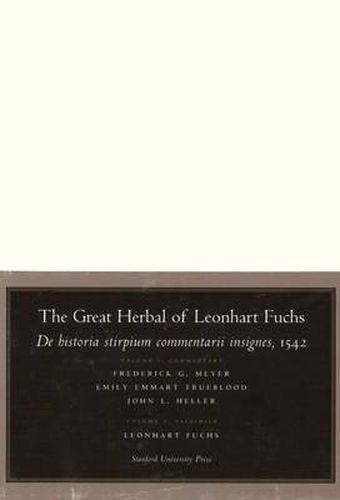Readings Newsletter
Become a Readings Member to make your shopping experience even easier.
Sign in or sign up for free!
You’re not far away from qualifying for FREE standard shipping within Australia
You’ve qualified for FREE standard shipping within Australia
The cart is loading…






Leonhart Fuchs’s herbal recognized for more than four centuries as a masterpiece of Renaissance botany and one of the most beautiful books ever printed now appears for the first time in a facsimile edition, accompanied by a volume of commentary based on three decades of historical and botanical research; the two volumes are published as a handsome boxed set. Only some 150 copies of the herbal are known to survive in rare book collections, and in the antiquarian book market it commands high prices (a copy was sold at Christie s for $17,000 in 1997). The herbal, a compilation of information on the medicinal properties of plants, had declined in the Middle Ages. This changed in the early sixteenth century with the emergence in Germany of the new form of a printed, illustrated herbal, led by De historia stirpium commentarii insignes by Leonhart Fuchs (1501-1566). The plan and organization of the herbal was entirely original with Fuchs, although the work included a vast amount of material derived from his Classical predecessors.
$9.00 standard shipping within Australia
FREE standard shipping within Australia for orders over $100.00
Express & International shipping calculated at checkout
Leonhart Fuchs’s herbal recognized for more than four centuries as a masterpiece of Renaissance botany and one of the most beautiful books ever printed now appears for the first time in a facsimile edition, accompanied by a volume of commentary based on three decades of historical and botanical research; the two volumes are published as a handsome boxed set. Only some 150 copies of the herbal are known to survive in rare book collections, and in the antiquarian book market it commands high prices (a copy was sold at Christie s for $17,000 in 1997). The herbal, a compilation of information on the medicinal properties of plants, had declined in the Middle Ages. This changed in the early sixteenth century with the emergence in Germany of the new form of a printed, illustrated herbal, led by De historia stirpium commentarii insignes by Leonhart Fuchs (1501-1566). The plan and organization of the herbal was entirely original with Fuchs, although the work included a vast amount of material derived from his Classical predecessors.